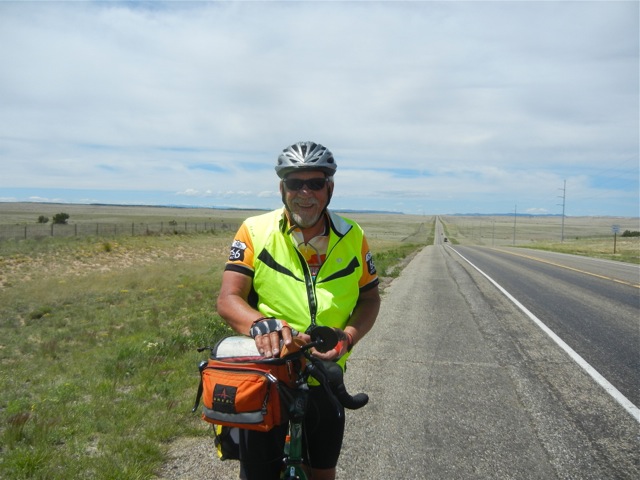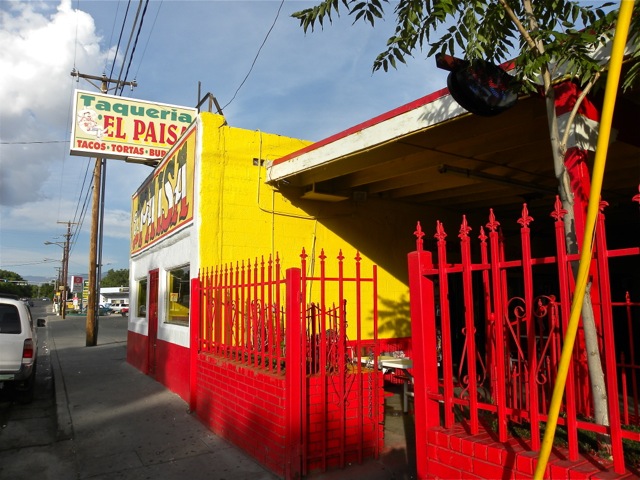EKLUND HOTEL, CLAYTON—It would not be true to say that the Rockabilly 4-day party chased me out of Tucumcari. No, I left of my own accord…although every room in the three motels I looked at were rented for the entire weekend.
Sponsored by Pabst Blue Ribbon Beer, there was plenty of live music, swing dances, pinup pageants, and vintage car shows. But (darn it) I had already missed the Happy Hour Hootenanny on Thursday.
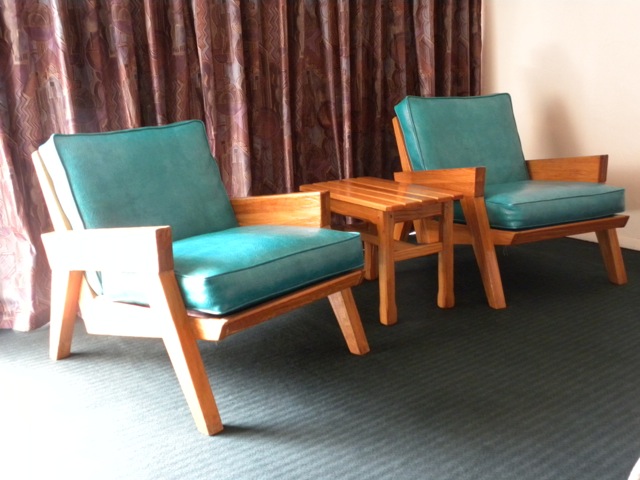
I didn’t really want to leave. I had a nice room at one of my favorite spots, the Historic Route 66 Motel, and did try to extend my stay. The rooms are kind of a combination of big-window modern and ranch oak, a look that suits my own aesthetic taste. However, after posting yesterday’s story about the Odeon Theater from the Circa expresso bar, I left town without regrets and was looking forward to the fresh air of a long country drive to the town of Clayton.
I stopped at the Clayton visitors’ center first thing. My question to Vivian Baldonado behind the desk was, “Just how expensive is it to stay at the Eklund Hotel compared to the national chain motels like the one across the street?” The old stone Eklund Hotel, built in 1898, is right in the center of downtown.
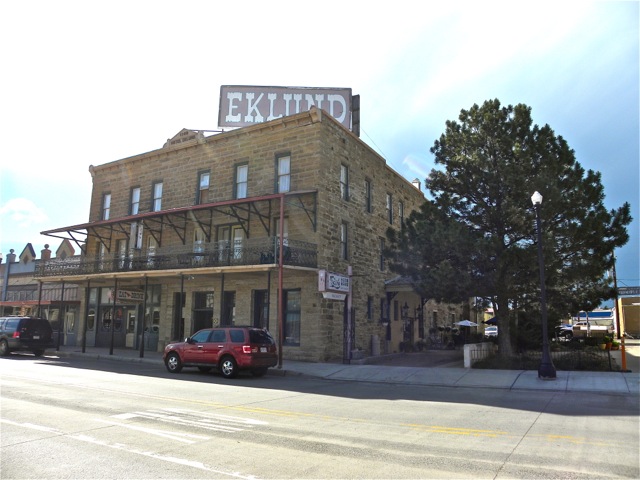
“Let me call them up,” she said. Well, the Eklund was less expensive: $81.00 with the old guy discount, including breakfast…and had a lot more charm. It had a lot more of everything, except maybe a swimming pool.
On this trip I was determined to look up what exactly happened to Black Jack Ketchum. After Billy the Kid, Black Jack Ketchum was probably the most famous outlaw in New Mexico. However, his fame today is mostly associated with how he died, not his exploits as an outlaw. Wikipedia has the whole story.
These facts stand out:
A train robber, he was the only person in the west executed by hanging for a crime less than murder.
His 1901 hanging was the last official one in New Mexico.
His head became separated from his body when he “swung into eternity.” However, they did sew his head back on.
He is buried in the Clayton Cemetery.
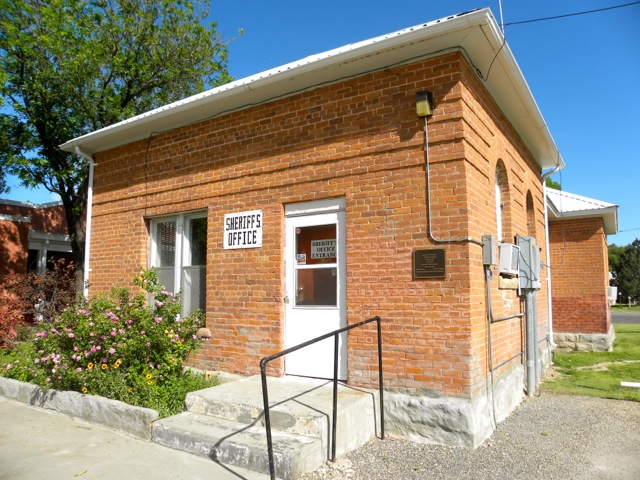
I went to check out the execution site. There is a famous photograph showing him on the scaffold. The site turned out to be behind an imposing but more recent court house and against the wall of a small brick sheriff’s office.
Black Jack Ketchum was originally buried in Boot Hill, but he was later reburied in the Clayton Cemetry in 1930. Before I left Albuquerque, my friend Sam Pillsbury had said that his grandfather recounted how Ketchum’s grave came to be placed. He told Sam that the cemetery at that time was divided between Catholics and Protestants and that neither of them wanted Ketchum’s grave, so he was buried in a kind of no-man’s-land right between them.

That may just be another myth of the west. However, true or not, Black Jack Ketchum’s gravesite in indeed on a brushy median down the middle of the cemetery. It is the only grave there.

Last night I walked across the street from the Eklund to the Luna Theater. I wanted to tell them how much the folks at the Odeon in Tucumcari appreciated their help and sharing of information about converting from film to digital projection.
It was just a beautiful building, inside and out. What a story! The city of Clayton had bought the theater and New Mexico MainStreet had helped out with a grant to restore the neon marquee and the digital conversion.

The theater is staffed with volunteers, except for the projectionist…who also volunteers. They have the original projector displayed in the lobby. What a monster. Everybody there was so nice. I went up into the projectionist’s booth and met Pete Mansfield who shows the movies.
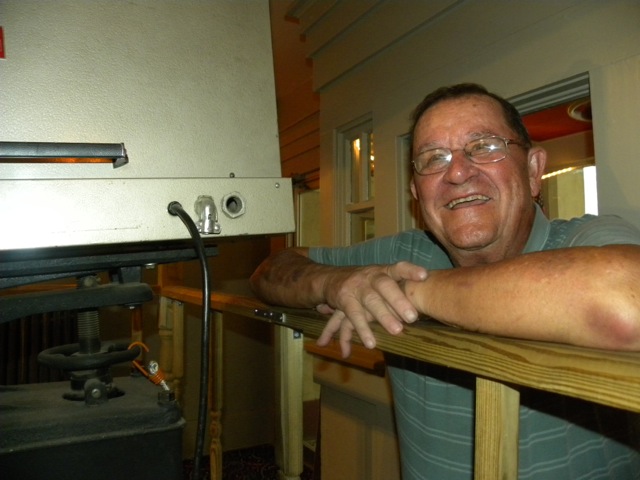
Back downstairs I was talking to the guy in the ticket booth. It turned out he was Jack Chosvig, the Mayor of Clayton! That has to bring a smile. In his friendly way he urged me to go out to take a look at their old high school. He said it cost a lot to keep the old high school open, but that tearing it down was unthinkable.
So I drove over. I took some pictures of the spread out campus. It was built somewhere around 1940 in Pueblo Revival style. There are maybe a dozen buildings out there. Anyway, walking back to my car, a neighbor motioned me over to his front yard.
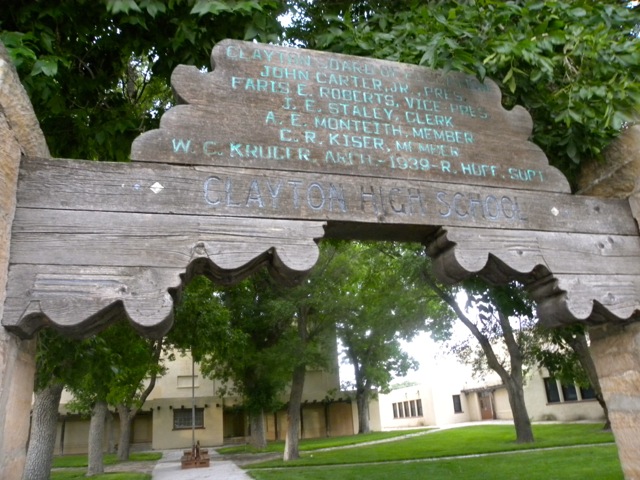
“Did you graduate from Clayton High School?” he asked. He was munching on some kind of lemon-colored ice cream bar.
“No, just taking some pictures. Did you?” Well, it turned out he had graduated from there in 1952. Now he lives right across the street.
“When I graduated there were 100 kids in our graduating class. Now they have only 39.” No wonder the mayor had talked about how expensive running the school had become. Where had all the people gone?
“Railroad?”
“Yep.” I headed back to the Eklund Hotel. Time to try to sort it all out.
